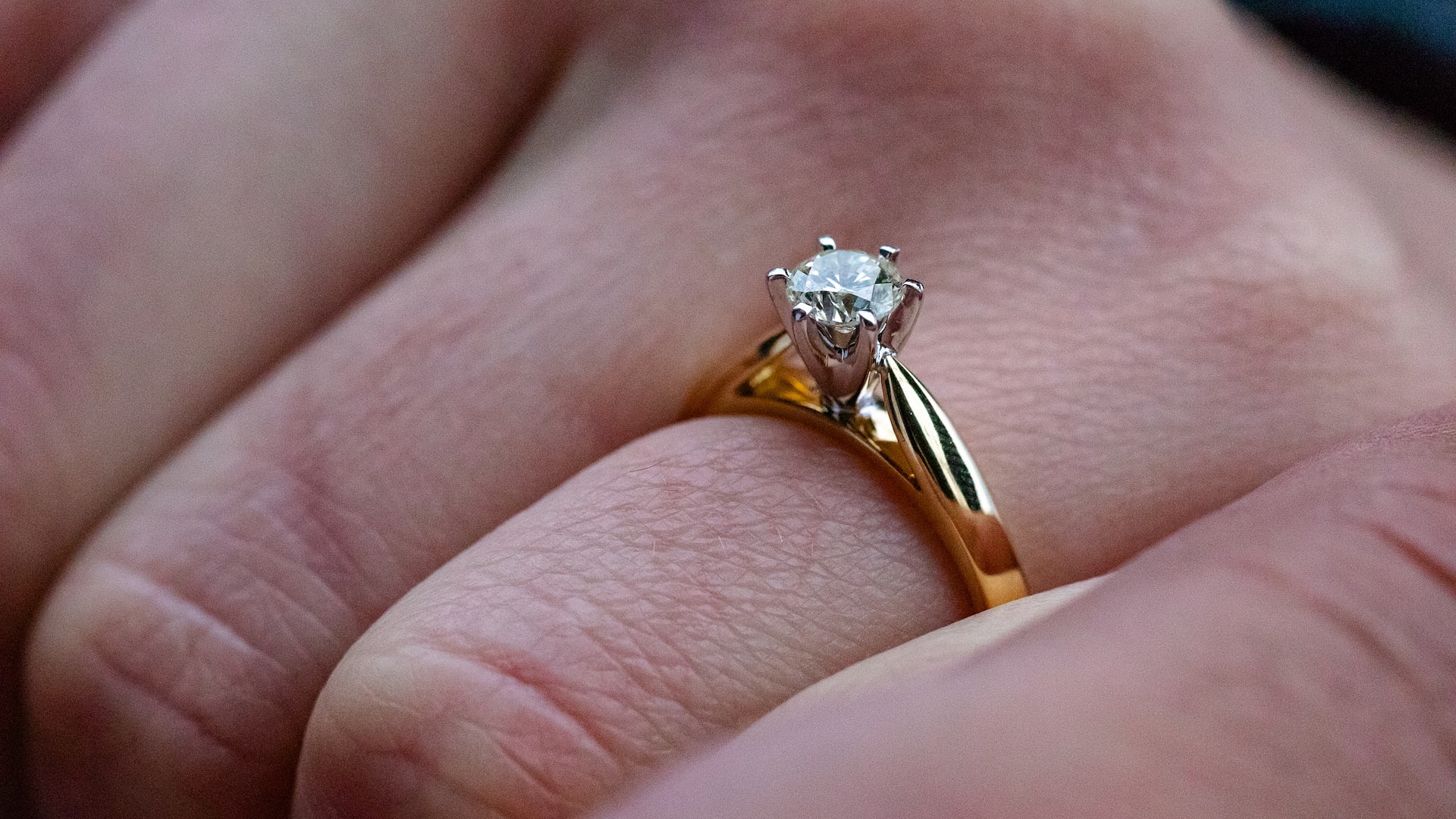
Table of Contents
When buying a diamond, the cut specifications are an aspect that shouldn’t be ignored. However, while most people have an understanding of cut features like table, depth or crown, few understand what the girdle is.
The diamond’s girdle is an important feature of the stone and one that has significant correlations to the stone’s appearance and durability.
Let’s take a detailed look into diamond girdle and how to choose the right girdle rating for your diamond.
What is a Diamond Girdle?
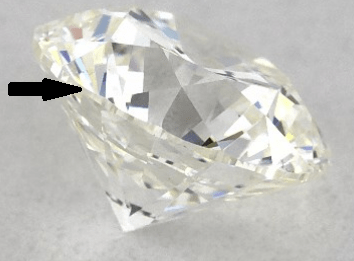
The girdle refers to that outermost edge of the diamond where the crown, which is the top part of the diamond, meets the pavilion, or the bottom part of the stone.
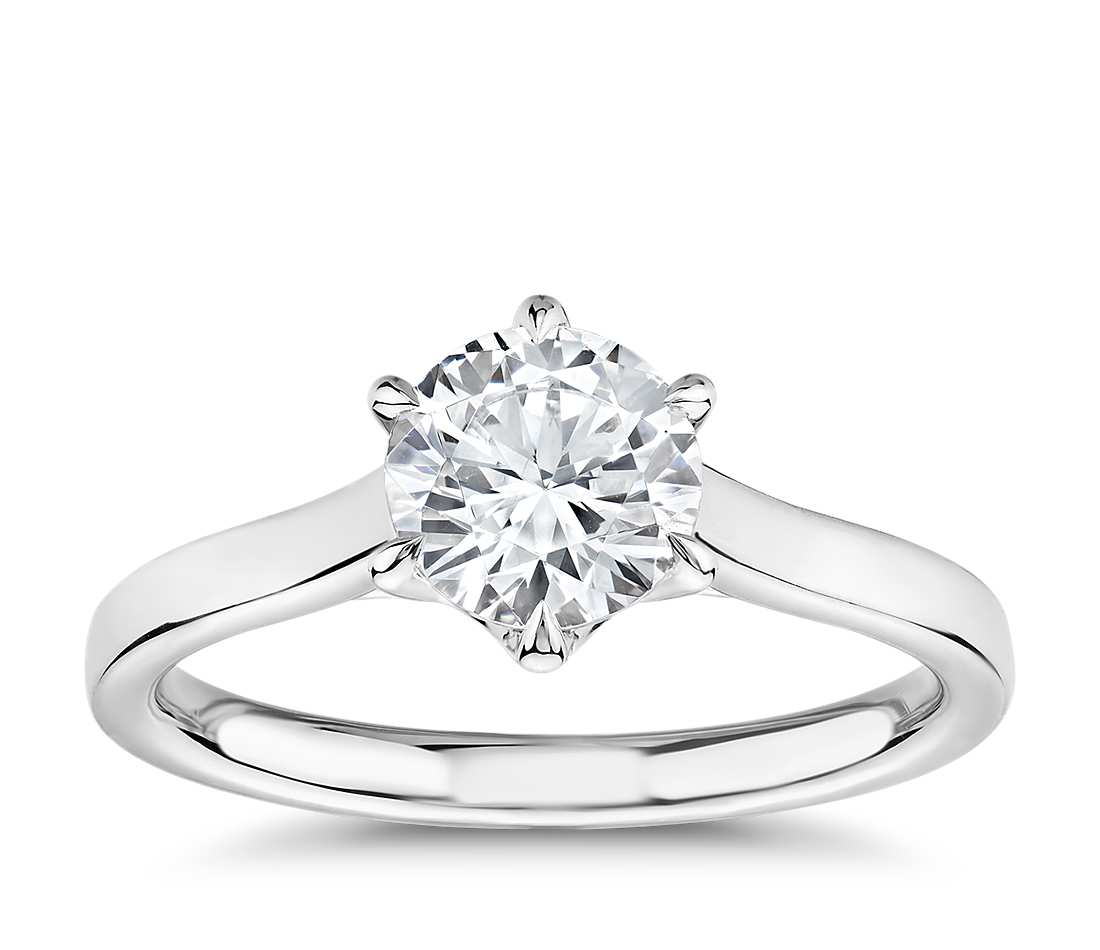
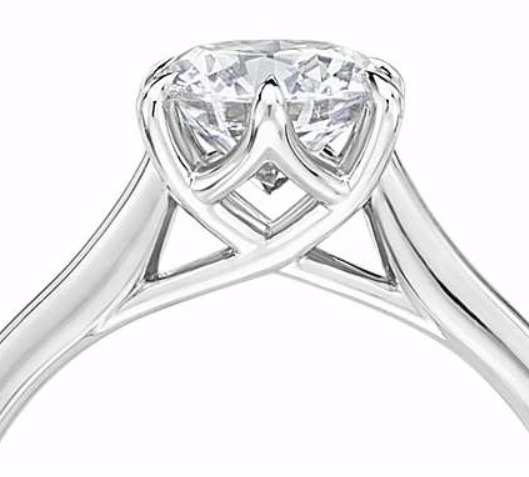
When you look at a diamond from the top view, the girdle is the widest edge, the circumference of the stone. As you can see from the images, the girdle is the part of the diamond that is actually held by the setting. In addition, it is the girdle that is measured to find the length and width dimensions of the stone.
The girdle is especially important when it comes to round diamonds. This is because it affects the cut grade of the stone. However, for fancy shapes, girdle thickness is not a big consideration.
Types of Diamond Girdles
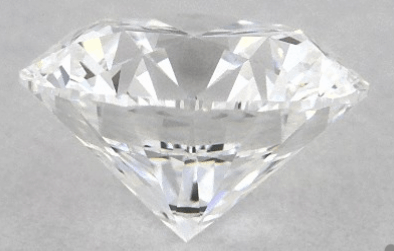
At first glance, it might seem that there’s actually just one type of girdle. But a closer investigation will reveal a few different types. These are:
1. Bruted (Rough or Frosted Girdle)
Also known as unpolished girdle, this type of girdle appears rough and opaque, much like frosted glass. The rough or frosted girdle was very popular, especially in the early half of the 20th. It’s not very common in modern diamonds, as a sleeker, more polished look is now preferred. The rough girdle can reduce light performance and is not a popular choice today.
2. Polished Girdle
This type of girdle is where the entire girdle is polished, smooth and continuous, a single large facet that surrounds the circumference of the diamond. The polished girdle is popular in step cuts as well as princess cuts but are sometimes also seen on round brilliants. The polished girdle is a good choice where light performance is concerned.
3. Faceted Girdle
Most diamonds today have faceted girdles where the entire perimeter of the girdle contains a number of facets. Each facet is vertical and proportional, cut to enhance the light performance of the stone. Unlike the smooth girdle, the faceted girdle allows maximum light reflection.
Now, while the type of girdle is important, it’s more a personal choice and doesn’t really affect the overall look of the diamond that much and it doesn’t affect the value at all. However, what’s more important is understanding girdle thickness ratings.
How Is a Diamond’s Girdle Evaluated?
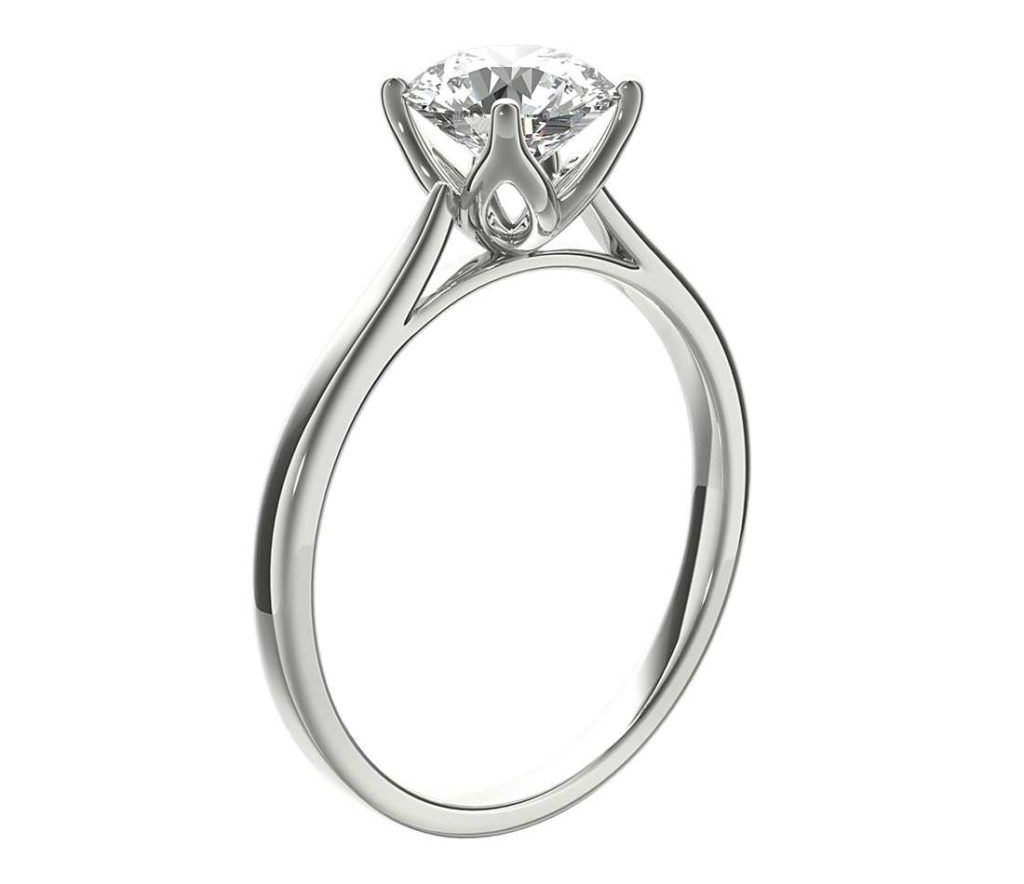
Girdles come in different thicknesses, ranging from extremely thin to extremely thick. The image below illustrates the main types of girdle thickness ratings.
The girdle of a diamond is rarely perfectly even all around the perimeter as there are narrow and wide points along the perimeter. This is why when the grading of the girdle is given, there are always two grades mentioned, which span the thickest and thinnest points of the stone’s girdle.
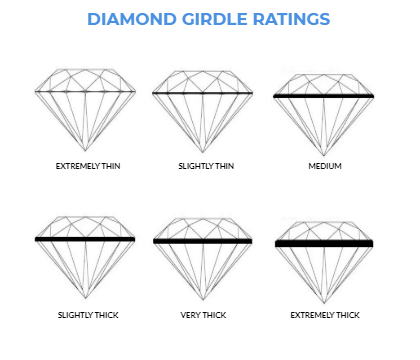
For example, the girdle of this diamond is graded as Extremely Thin – Slightly Thick. This measures the thickest and thinnest points of the girdle.
What’s the Best Girdle Thickness?
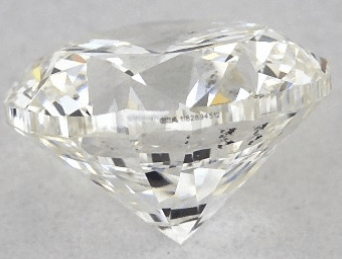
Girdles that are extremely thin are quite fragile due to their knife-edge like circumference and can chip or break if exposed. Ideally, these would be set in a protective setting, like a bezel or channel setting, to keep the diamond safe.
Likewise, girdles that are extremely thick have a lot of wasted diamond and make the stone look smaller (more on this below). Both these gradings are indicative of low-quality cut, have poor light performance and should be avoided if possible. These kinds of diamonds are often given a low cut rating.
The best type of girdle to opt for is medium thickness. It’s the perfect balance between durability and aesthetics. Most Excellent/Ideal cut diamonds fall within the medium to slightly thick grades.
Thick Girdles – Wasted Diamond Carat Weight
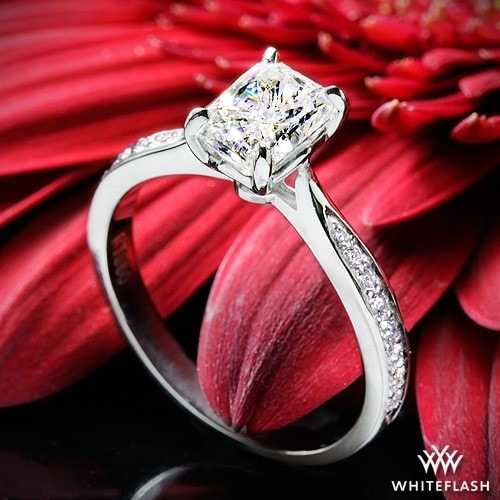
If the girdle is thick, it makes the diamond heavier and deeper but doesn’t make it any larger. What this means is that you pay may be paying more for the carat weight but the diamond size, when viewed face up, will not change.
In other words, once you set the diamond in its setting, you won’t see all that extra carat weight that’s gone into the thick girdle. Considering this, it’s best to avoid very thick girdles as it is simply ‘dead weight’.
However, there are times when a thick girdle might be a great idea.
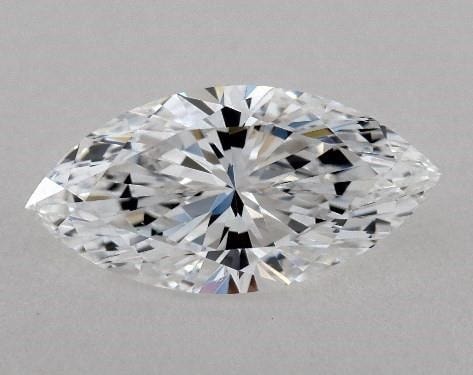
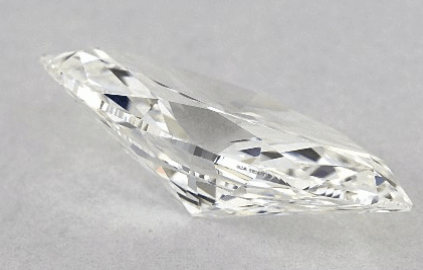
For example, a diamond shape with sharp pointed corners like marquise, pear, or princess would benefit from having a girdle that is thicker at those points. This will enhance its durability and also add proportion to the stone.
Girdles and Grading Reports
When you examine the grading report of a diamond, the girdle measurements will be specified using the grading words Extremely Thick to Extremely Thin, and a percentage, which is the proportion of the girdle to the diameter of the diamond.
The report will also specify the type of finish that the girdle has – bruted, polished or faceted. This gives you all the information you need about the girdle.
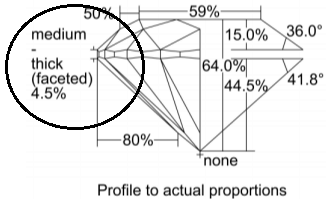
Before you purchase a diamond, always ensure that you have viewed the actual stone very carefully, either in person or via high quality HD videos like those of James Allen and Blue Nile. This will allow you to inspect the girdle and see how it works with the overall aesthetics of the stone.
Where to Buy High Quality Diamonds
When buying a diamond, always choose a trustworthy retailer with a commitment to quality and customer service. If you decide to shop online, we recommend the following retailers:
Why: Superior diamond imaging, competitive prices, high quality, wide range
An online giant in the diamond space, James Allen offers a stunning collection of high-quality diamonds. The images and videos are unparalleled in quality and is the same as viewing the diamond through a jeweler’s loupe.
Why: Competitive prices, wide range, great quality
One of the most well-known online diamond retailers, Blue Nile offers a massive exclusive online diamond inventory. Search diamonds and gemstones here at competitive prices, solid after-sales policies, and good customer service.
Why: Superior cut quality, exclusive range, stunning designs
Whiteflash has earned an international reputation for the elite quality of their precision cut diamonds, and for their impeccable collection of designer engagement rings. Check their stunning range of diamond jewelry and loose diamonds.
Why: Impeccable quality, superior cut, small but exclusive inventory
Brian Gavin is a renowned expert in diamond cut – and it shows in the superior cut quality of their diamonds. For the very best in diamonds, search their inventory of designer diamond jewelry and loose diamonds.
Wrapping Up
There are many factors to consider when buying a diamond, and the girdle is just one of them. As a component of the cut quality, it’s important to understand the girdle and how it impacts the overall look and value of your stone.
The girdle impacts the durability of the diamond, as well as its depth and sparkle. By considering these details, you’ll be able to purchase a high-quality diamond.
To learn more about diamond cut specifications, check out our articles on diamond fire, diamond table and depth and diamond cut.









